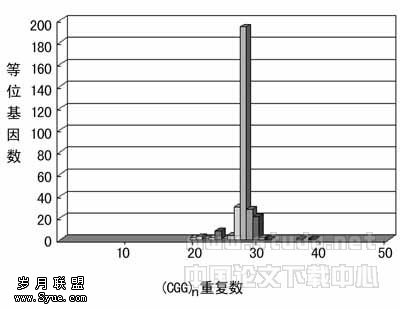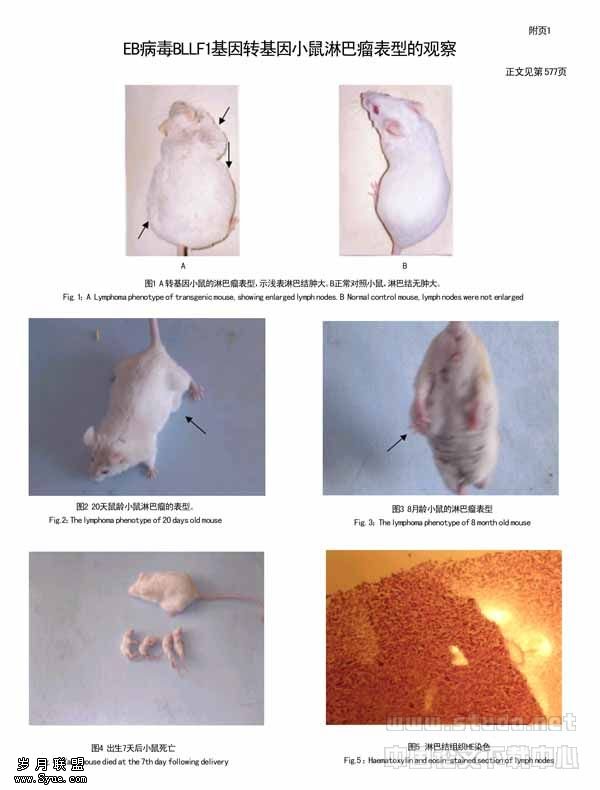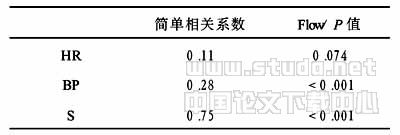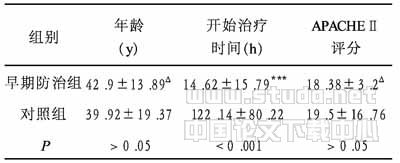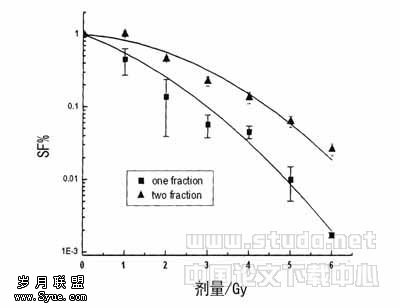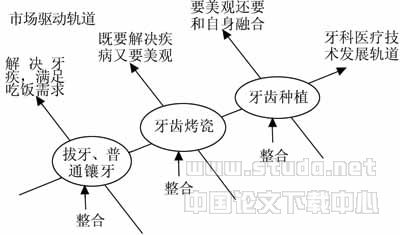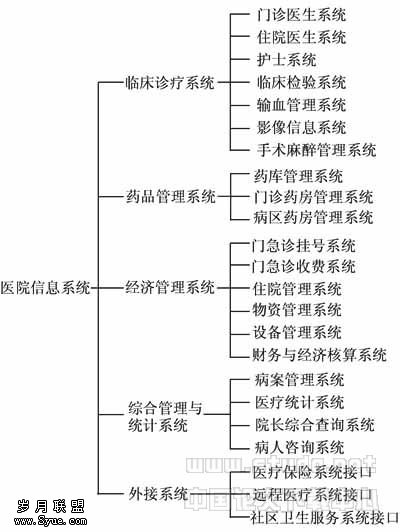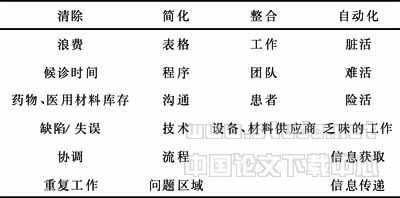叶酸降低高同型半胱氨酸大鼠主动脉内皮黏附分子VCAM
【关键词】 高同型半胱氨酸
Folic acid reduces adhesion molecules VCAM1 expression on endothelium in rats with hyperhomocysteinemia
【Abstract】 AIM: To investigate the effects of folic acid supplementation on the expression of adhesion molecules VCAM1 in aortic endothelium of rats with hyperhomocysteinemia (HHCY) induced by ingestion of excess methionine (MET). METHODS: Thirty male SD rats(200±20 g)were divided into 3 groups (n=10 in each group): control group (Control), high MET group (MET) and MET plus folate group (MET+folate). The rats were fed respectively on normal diet, normal diet enriched by 17 g/kg MET and normal diet plus 17 g/kg MET and 0. 06 g/kg folate for 45 d. The levels of total plasma homocysteine (HCY) were detected and the expression of VCAM1 protein and mRNA in aorta of rats was detected respectively by immunohistochemistry and RTPCR. RESULTS: The highmethionine diet resulted in a significant increase in the plasma HCY levels [(140.7±36.9) μmol/L vs (6.5±1.1) μmol/L]. The serum HCY levels were significantly lower in rats fed on highmethionine plus folaterich diet than those in rats fed on the highmethionine diet [(50.6±21.8) μmol/L vs (140.7±36.9) μmol/L, P<0.05]. The expression of adhesion molecules VCAM1 at protein and mRNA levels was higher in aortic endothelium of rats fed on the highmethionine diet than that in control rats. The expression of VCAM1 at protein and mRNA levels was significantly reduced in aortic endothelium of rats fed on highmethionine plus folaterich diet compared with that in rats fed on highmethionine diet. CONCLUSION: A high methionine diet for 45 d is sufficient to induce HHCY. Folate supplementation to the rats fed on the highmethenine diet prevents the elevation of HCY levels in the blood and reduces the expression of adhesion molecules VCAM1 in aorta of rats with HHCY.
【Keywords】 hyperhomocysteinemia; adhesion molecules VCAM1; folate
【摘 要】 目的:探讨叶酸对高蛋氨酸(MET)喂养所致的高同型半胱氨酸(HHCY)血症大鼠主动脉内皮黏附分子VCAM1表达的影响. 方法: SD大鼠30只随机分3组: 正常对照组(Control组), 高蛋氨酸组(MET组)和蛋氨酸+叶酸组(MET+Folate组), 每组10只,分别给予普通饲料,普通饲料加17 g/kg蛋氨酸,普通饲料加17 g/kg蛋氨酸和0.06 g/kg的叶酸,饲养45 d,测定血浆总同型半胱氨酸浓度(HCY),分别采用免疫组织化学染色法及RTPCR法检测大鼠的主动脉VCAM1蛋白及mRNA表达. 结果:高MET组血浆HCY浓度明显高于Control组[(140.7±36.9) μmol/L vs (6.5±1.1) μmol/L, P<0.05],MET+Folate组血浆HCY浓度明显低于高MET组[(50.6±21.8) μmol/L vs (140.7±36.9) μmol/L, P<0.05];在高MET组中,主动脉内皮表达的细胞黏附分VCAM1在蛋白及mRNA水平均较Control组明显增加,而MET+Folate组减少蛋氨酸饮食诱导的HHCY血症所致的主动脉内皮表达的细胞黏附分子VCAM1表达. 结论: 补充叶酸显著降低血浆HCY水平,也降低HHCY大鼠主动脉内皮细胞黏附分子VCAM1的表达.
【关键词】 高同型半胱氨酸;黏附分子VCAM1;叶酸
0引言
高同型半胱氨酸血症(hyperhomocysteinemia, HHCY)是心脑血管疾病的一个独立危险因素[1],其可能机制有:氧化应激反应增强、NO的生物活性降低及血栓形成[2,3],然而,确切的分子机制仍不清楚. 离体实验证实HCY能刺激培养的单核细胞表达多种炎症趋化因子[4],但在体HHCY血症能否增加趋化因子的表达报道甚少. 我们探讨HHCY是否通过细胞黏附分子VCAM1的参与而发挥致动脉粥样硬化作用效应,及叶酸治疗是否能下调这种炎症反应.
1材料和方法
1.1材料
健康清洁级SD大鼠30只,雄性,体质量(200±20)g(华中科技大学同济医学院动物实验中心提供),随机分3组,每组10只: 正常对照组(Control组), 蛋氨酸组(methionine,MET组),蛋氨酸+叶酸组(MET+Folate组). 对照组给予普通饲料,HHCY组为普通饲料加17 g/kg蛋氨酸,叶酸治疗组为普通饲料加17 g/kg蛋氨酸和0.06 g/kg叶酸[5],均饲养45 d后,心脏取血10 mL,3000 r/min,离心10 min,-20℃冻存.
1.2方法
1.2.1大鼠血浆总HCY测定取3组大鼠血样本1 mL交协和心血管研究所实验室采用高效液相色谱法(HPLC)测定血浆总HCY浓度.
1.2.2大鼠的主动脉免疫组织化学染色分离3组大鼠的主动脉,取升主动脉组织送协和医院病理科行石蜡切片(5 μm). 将固定的主动脉石蜡切片立刻用100 mL/L马血清及PBS在室温下封闭30 min. 加入1∶100羊抗大鼠VCAM1多克隆一抗(Santa Cruz) 50 μL孵育1 h, 用PBS洗3次,每次15 min. 加入1∶250的辣根过氧化物酶标记的兔抗羊二抗(Dako)孵育1 h,用PBS洗3次,每次15 min. 用900 mL/L甘油PBS封片. 切片置于光学显微镜下观察并照相(×200).
1.2.3半定量RTPCR法检测大鼠的主动脉VCAM1 mRNA表达① 组织总RNA提取(Trizol法):Trizol RNA提取试剂盒是美国invitrogin公司提供. 取大鼠新鲜主动脉组织100 mg置1.5 mL匀浆器中,加入1 mL Trizol充分匀浆,室温静置5 min. 加入0.2 mL氯仿,振荡15 s,静置2 min. 4℃离心,12 000 g×15 min,取上清. 加入0.5 mL异丙醇,将管中液体轻轻混匀,室温静置10 min. 4℃离心,12 000 g×10 min,弃上清. 加入1 mL 750 mL/L乙醇,轻轻洗涤沉淀. 4℃,7500 r/min×5 min,弃上清. 晾干,加入适量的DEPC H2O溶解(65℃促溶10~15 min). 抽提出的RNA经凝胶电泳鉴定RNA质量,紫外分光光度计260 nm和280 nm鉴定RNA的纯度; ② cDNA第一链的合成: 将RNA 1~5 μg加入微量离心管中,补充适量的DEPC H2O使总体积达11 μL. 在管中加10 μmol/L Oligo(dT) 12~18 μL,轻轻混匀、离心. 70℃加热10 min,立即将微量离心管插入冰浴中1 min. 然后加入下列试剂的混合物:10×PCR buffer 2 μL,25 mmol/L MgCl2 2 μL,10 mmol/L dNTPmix 1 μL,0.1 mol/L DTT 2 μL. 轻轻混匀,离心. 42℃孵育2~5 min. 于70℃加热15 min 以终止反应. 将管插入冰中,加入RNase H 1 μL,37℃孵育20 min,降解残留的RNA. -20℃保存备用; ③ 引物的设计与合成:VCAM1引物设计参照有关,经基因库核实,由上海生物工程公司合成. 上游引物为5′GGAGACACTGTCATTATCTCCTG3′,下游引物为5′TCCTTTCATGTTGGCTTTTCTTGC3′,扩增产物为336 bp,采用为βactin内参照,其上游引物5′CTCCTTAATGTCACGCACGATTTC3′,下游引物为5′GTGGGGCGCCCCAGGCACCA3′, 扩增产物为506 bp; ④ PCR扩增:PCR反应总体积20 μL,分别加入10×PCR buffer minus Mg 2 μL, 25 mmol/L MgCl2 1.2 μL, 10 mmol/L dNTP mix 0.4 μL, 5 μmol/L上游引物0.8 μL, 5 μmol/L 下游引物0.8 μL, Taq DNA polymerase (1×1012/L) 0.8 μL, cDNA 0.8 μL, autoclaved distilled water 13.40 μL. 94℃变性3 min,94℃ 45 s,58℃ 45 s,72℃ 1 min, 扩增30个循环,72℃延伸10 min. VCAM1和βactin反应条件相同. PCR扩增产物经20 g/L琼脂糖凝胶(溴化已锭染色)60 V电泳60 min,紫外灯下观察记录照相.
统计学处理:用SPSS 10.0软件包进行统计分析. 各组间的数据采用单变量方差分析,方差齐性条件下选用SNK法进行两两比较,方差不齐时,采用GamesHowell方法比较. P<0.05认为差异有统计学意义.
2结果
2.1大鼠血浆总HCY水平Control,MET与MET+Folate三组间存在显著性差异[(6.5±1.1) vs (140.7±36.8) vs (50.6±21.8) μmol/L, P<0.05]. 说明高MET饮食可充分诱导高HCY血症,而叶酸补充,能显著降低血浆tHCY水平.
2.2免疫组织化学染色结果MET组大鼠主动脉内皮表达的细胞黏附分子VCAM1较Control组明显增加,而MET+Folate组能减少蛋氨酸饮食诱导的HHCY血症所致的主动脉内皮表达的细胞黏附分子VCAM1的表达(Fig 1).
2.3大鼠的主动脉VCAM1 RTPCR结果用半定量RTPCR法检测大鼠的主动脉VCAM1 mRNA表达.MET组大鼠主动脉VCAM1 mRNA表达较Control组明显增加,而MET+Folate组大鼠的主动脉VCAM1 mRNA表达较蛋氨酸组明显减少(Fig 2).
3讨论
本研究中,我们观察到饮食诱导的HHCY血症使大鼠主动脉内皮表达的细胞黏附分子VCAM1增加,大鼠喂以高MET饲料45 d,可充分诱导高HCY血症. 而叶酸补充治疗,在显著降低血浆tHCY水平的同时,也降低了HHCY大鼠主动脉内皮细胞. 众所周知,炎症反应在动脉粥样硬化的发生中发挥着重要的作用,外周血单核细胞迁入动脉内皮下间隙,分化成为巨噬细胞是动脉粥样硬化的最早事件,而炎性细胞的召集、浸润主要由多种细胞趋化因子调节. 动脉内皮细胞可以诱导表达黏附分子VCAM1,在血管壁的粥样斑块中,VCAM1,ICAM1表达增加[6,7]. 我们的结果提示,饮食诱导的HHCY血症使大鼠主动脉内皮表达的细胞黏附分子VCAM1增加,而VCAM1表达的增加,可招募、聚集单核细胞迁入动脉内皮下间隙,这是早期动脉粥样硬化的主要特征. 最近的报道,冠心病伴HHCY患者,给予叶酸及Vitamin B12治疗9 wk后,其血管内皮功能改善. 降低血浆HCY水平有助于血管功能的改善,叶酸有其独立的抗氧化作用,而且能改善内皮NO合酶功能,这些可能对治疗早期动脉粥样硬化更有帮助[8,9].我们证实叶酸补充治疗,在显著降低血浆tHCY水平的同时,也至少从mRNA水平抑制了HHCY大鼠主动脉内皮细胞黏附分子VCAM1的表达,从而抑制单核细胞对内皮的黏附,减轻动脉粥样硬化的炎症反应,抑制动脉粥样硬化的发生、发展. 因此叶酸除了具有降低血浆tHCY水平及抗氧化作用外,其对细胞黏附分子表达的抑制证实其具有抗炎功能,这可能为临床治疗HHCY血症导致的动脉粥样硬化提供基础实验依据.
【文献】
[1] Welch GN, Loscalzo J. Homocysteine and atherothrombosis [J]. N Engl J Med, 1998; 38(15):1042-1050.
[2] Holven KB, Holm T, Aukrust P, et al. Effect of folic acid treatment on endotheliumdependent vasodilation and nitric oxidederived end products in hyperhomocysteinemic subjects [J]. Am J Med, 2001;110(7):536-542.
[3] Guba SC, Fonseca V, Fink LM. Hyperhomocysteinemia and thrombosis [J]. Semin Thromb Hemost, 1999;25(3):291-309.
[4] Zeng X, Dai J, Remick DG, et al. Homocysteine mediated expression and secretion of monocyte chemoattractant protein1 and interleukin8 in human monocytes [J]. Circ Res, 2003;93(4):311-320.
[5] Boisvert WA, Curtiss LK, Terkeltaub RA. Interleukin8 and its receptor CXCR2 in atherosclerosis[J]. Immunol Res, 2000;21(23):129-137.
[6] JohnsonTidey RR, McGregor JL, Taylor PR, et al. Increase in the adhesion molecule Pselectin in endothelium overlying atherosclerotic plaques. Coexpression with intercellular adhesion molecule1 [J]. Am J Pathol, 1994;144(5):952-961.
[7] Nakashima Y, Raines EW, Plump AS, et al. Upregulation of VCAM1 and ICAM1 at atherosclerosisprone sites on the endothelium in the ApoEdeficient mouse [J]. Arterioscler Thromb Vasc Biol, 1998;18(5):842-851.
[8] Chambers JC, Ueland PM, Obeid OA, et al. Improved vascular endothelial function after oral B vitamins: An effect mediated through reduced concentrations of free plasma homocysteine[J]. Circulation, 2000;102(20):2479-2483.
[9] Verhaar MC, Wever RM, Kastelein JJ, et al. The active form of folic acid, restores endothelial function in familial hypercholesterolemia [J]. Circulation, 1998;97(3):237-241.


